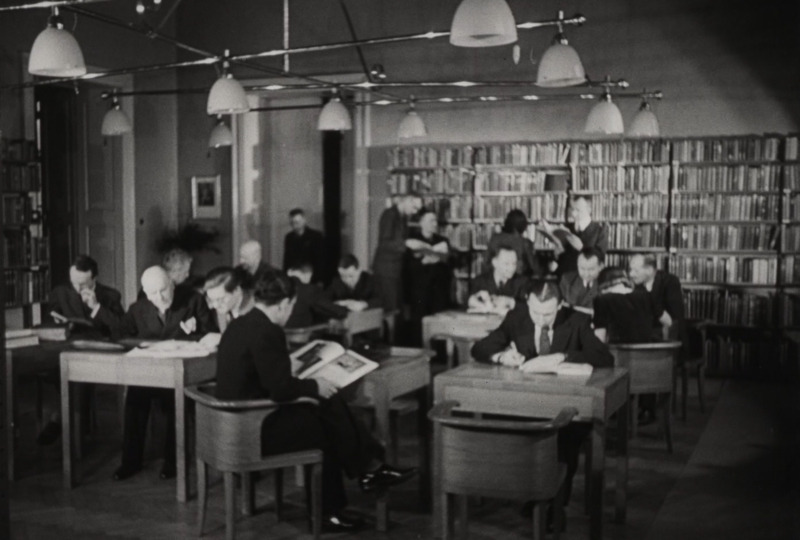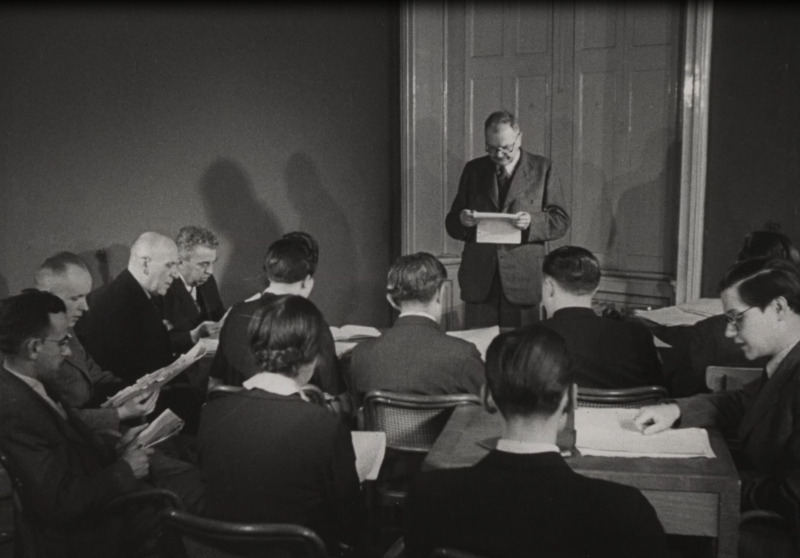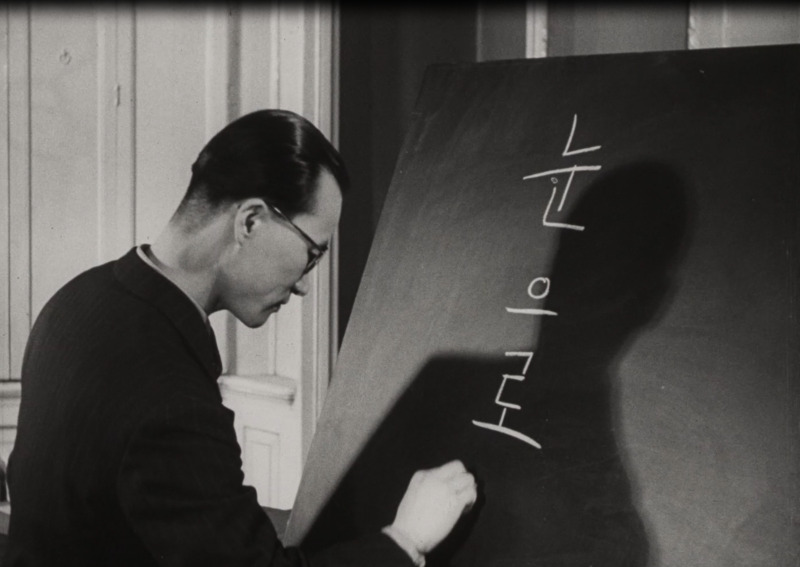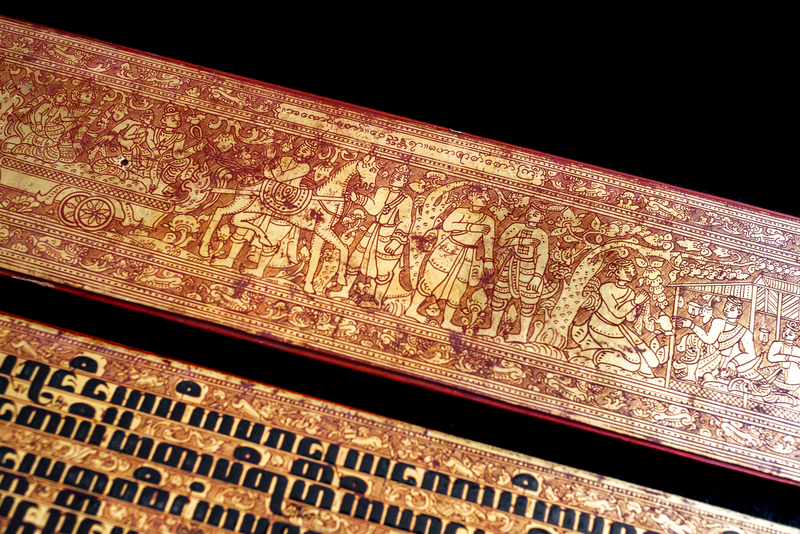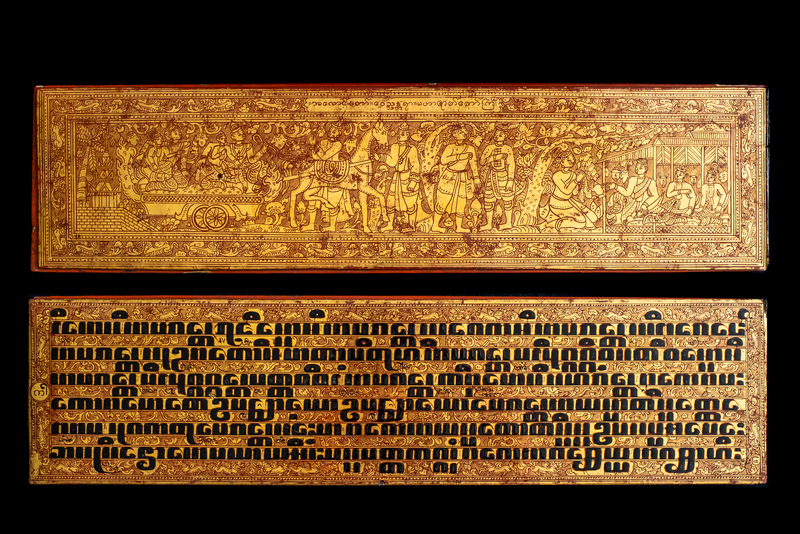Protektorát
V době uzavření českých vysokých škol nahradila škola orientálních jazyků lidem, kteří se zajímali o Orient, do jisté míry univerzitní studium. Orientální ústav byl jediným místem, kde se orientalisté mohli věnovat svému bádání a publikovat články a kde studenti mohli pokračovat ve studiu.
Uzavření univerzit a postupný odchod profesorů do důchodu či jejich propouštění znamenaly narušení kontinuity mnoha oborů. Orientalisté našli útočiště v Orientálním ústavu, kde se mohly nadále vyučovat orientální jazyky, zejména jejich moderní podoba. Za války ústav zajišťoval nejen pokračování výuky, ale také vyplácení dotací a odměn za odbornou orientalistiku.*
One of the early acquisitions of the institute is a Kammavaca, a decorative manuscript considered unique to Myanmar which is written in Pali language. It has been used as one of the learning materials during this period. This Kammavaca that Oriengtal Institute acquired is the Vessantara Jātaka tells the story of one of Gautama Buddha's past lives, a compassionate and generous prince, Vessantara, who gives away everything he owns. The text is written in tamarind seed, with 6 lines of text per folio, and text separators. The text is interlineated with leaves / birds, with ywe-dan (circles) and chin-thei (lion) on top and bottom, and ywe-dan (circles) and chin-thei (lion) on the ends. (Description supplied by Pedro Marquez Vidal)
Odkazy a další informace
*Adéla Jůnová Macková and Jůn Libor (Eds). 2022. Czechoslovakia in the Orient, the Orient in Czechoslovakia 1918-1938 = Czechoslovakia in the Orient, the Orient in Czechoslovakia 1918-1938 (Prague: Masaryk Institute and Archive of the Czech Republic, vvi)

